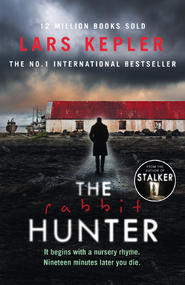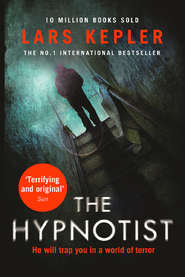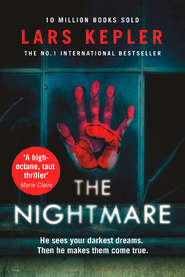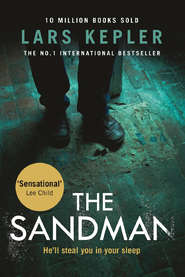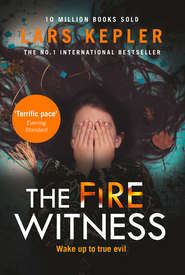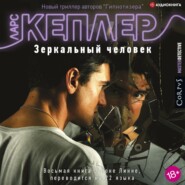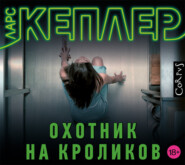По всем вопросам обращайтесь на: info@litportal.ru
(©) 2003-2025.
✖
Stalker
Настройки чтения
Размер шрифта
Высота строк
Поля
‘Go to the Nordic Museum,’ he says in a thick voice, as if he were worried about changing his mind. ‘There’s a small bridal crown, a Sámi bridal crown made of woven roots. Look at it carefully.’
‘Thanks.’
‘Good luck,’ Åhlén says seriously, then hesitates. ‘No one wants to hug a pathologist, but …’
Saga hugs him hard, then leaves the room and hurries along the corridor.
21 (#ulink_650c557f-5d60-58e3-af57-259c2e94353e)
Saga parks in front of the large flight of steps leading up to the Nordic Museum, drinks a sip of cold coffee from a 7-Eleven mug, and looks at the people around her, all dressed for summer. It’s as if she hasn’t really paid attention to her surroundings before now. Adults and children, tired from the sun or long picnics, or excited and expectant on their way to the amusement park or some restaurant.
She’s barely noticed the summer passing her by again. Since Joona disappeared she has withdrawn from the world, searching for Jurek’s body.
Now it’s time to bring this to an end.
Saga gets out of the car and goes up the steps. There’s a broken syringe on one of the top steps.
She walks in through the imposing entrance, buys a ticket, picks up a plan of the museum and carries on into the entrance hall. A colourful statue of Gustav Vasa sits on a huge wooden throne gazing off towards the replica of a post-war home that’s been installed in the museum.
As she walks towards the staircase she catches a glimpse of a text about the people’s home and the Social Democratic vision of a modern, supportive and equal Sweden in which all families had the right to a home with hot water, a kitchen and bathroom.
She jogs up the stone steps and carries on to the section for Sámi handicrafts. A few visitors are walking along the glass cabinets containing jewellery, knives with reindeer-horn handles, cultural artefacts and clothes.
She stops in front of a display featuring a bridal crown. This must be the one Åhlén meant. It’s a beautiful piece of work, made of woven birch-root, with points that look like the fingers of two interlaced hands.
Saga looks at the small lock on the case, sees that it would be easy to pick, but the cabinet is alarmed and there’s a risk that a guard would arrive before she had time to look at the crown.
An elderly woman stops next to her and says something in Italian to a man pushing a stroller a short distance away.
The man speaks to the guard and is helped towards the lifts. A girl with straight fair hair is looking at the ceremonial Sámi costumes.
There’s a crackle of velcro as Saga pulls out her tiny dagger for hand-to-hand fighting from its sheath below her left armpit. She carefully slides the tip in next to the lock on the glass door, and jerks it. The door shatters and the splinters fall to the floor as an alarm goes off.
The girl looks at Saga in astonishment as she calmly puts the knife away, opens the door and removes the bridal crown.
It looks smaller outside the case, and weighs practically nothing. Saga stares at it as the alarm blares.
Åhlén told her that Summa’s mother had woven the crown for her own wedding, and that Summa had worn it for hers, and then donated it to the museum of handicrafts in Luleå.
Saga sees the guard hurrying back, and carefully turns the crown over in her hands, looks inside it and sees that someone has burned the name ‘Nattavaara 1968’ into it with a brand. She puts the crown back in the case and closes the shattered door.
She knew there was some sort of family connection to Nattavaara, and assumes that that’s where Joona is at the moment.
Saga feels her heart swell at the thought of being able to tell Joona Linna that it’s all over.
The guard’s cheeks are flushed as he stops five metres away and points at her with his radio without managing to get a word out.
22 (#ulink_ffb47053-573d-5878-bd99-d3792e4c2eaf)
The train pulls out of Stockholm Central Station, rocking noisily across the points as it rolls away from the dirty sidings. To the left, big white boats are gliding along on Karlbergssjön, while to the right is a concrete wall covered in badly painted-over graffiti.
Seeing as the bunks were all booked, Saga has had to take an ordinary seat. She shows her ticket to the conductor, then eats a sandwich with her eyes fixed outside the window. As the train passes Uppsala she takes off her military boots, folds her jacket around her pistol and uses that as a pillow.
The train journey to Nattavaara, over a thousand kilometres away, will take almost twelve hours.
The train rumbles on through the night. Lights pass by outside like tiny stars, fewer and fewer the further north they get. Warm air streams from the scorching-hot radiator by the panel beside her seat.
In the end the night outside the window is nothing but solid darkness.
She closes her eyes and thinks about what Nils Åhlén told her. When Joona and his partner Samuel Mendel caught Jurek Walter many years ago, Jurek announced his plan for revenge before he was isolated in the secure unit at the Löwenströmska Hospital. Samuel thought it was an empty threat, but somehow Jurek managed to reach out from his cell and snatch Samuel’s wife and two sons.
Joona realised the threat was serious. With Nils Åhlén’s help, he arranged for his wife and little daughter to die in a car accident. Summa and Lumi were given new identities and had no further contact with Joona. As long as Jurek was alive, there was a risk that his threat might be put into practice. In hindsight, Joona saved them from a terrible death by sacrificing their life together.
But Saga can reassure Joona now. She’s going to find him and reassure him. Jurek Walter is dead, his remains have been found and identified.
At the thought of that, an almost erotic shiver runs through her body. She leans back in her seat, shuts her eyes, and falls asleep.
For the first time in ages, she sleeps properly.
When she wakes up the train is standing still and chill morning air is streaming into the carriage. She sits up and sees that she is now in Boden. She has been asleep for almost ten hours, and needs to change trains for the last part of the journey to Nattavaara.
She stretches, puts her boots on, tucks her gun in its holster, picks up her jacket and gets off the train. She buys a large cup of coffee at the station, then returns to the platform. She watches a group of young men in military fatigues and green berets getting on to a train heading in the other direction.
Someone has smeared chewing tobacco on the glass of the station clock.
A black locomotive with red undercarriage approaches with a squeal of brakes. Rubbish blows across the sleepers. The train stops and wheezes slowly at the deserted platform. Saga is the only person who gets on the train to Gällivare, and she has the carriage to herself.
The journey to Nattavaara is supposed to take less than an hour. Saga drinks her coffee, goes to the toilet, washes her face, then sits in her seat and watches the landscape go past, vast stretches of forest with the occasional red cottage.
Her plan is to go to the village shop or parish hall and ask about people who have moved in recently – there can hardly be that many.
It’s almost eleven o’clock in the morning when Saga Bauer steps on to the platform. The station is little more than a shack with a sign on its roof. In the weeds in front of the shack is a bench with peeling paint and rusting armrests.
Saga starts to walk along the road through the dark green, whispering forest. There’s no sign of anyone, but occasionally she hears dogs barking.
The road surface is uneven and cracked from frost.
She carries on, over a bridge that stretches across the valley of the Pikku Venetjoki, then she hears the sound of an engine behind her. An old Volkswagen pickup is heading towards her, and she waves her arms to stop it.
A suntanned man in his seventies, wearing a grey sweater, winds down his window and nods in greeting. Beside him sits a woman the same age, in a padded green jerkin and pink-framed glasses.
‘Hello,’ Saga says. ‘Do you live in Nattavaara?’
‘We’re just passing through,’ he replies.
‘We’re from Sarvisvaara … another metropolis,’ the woman says.
‘Do you know where the grocery store is?’







